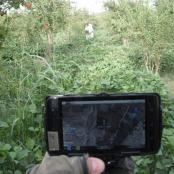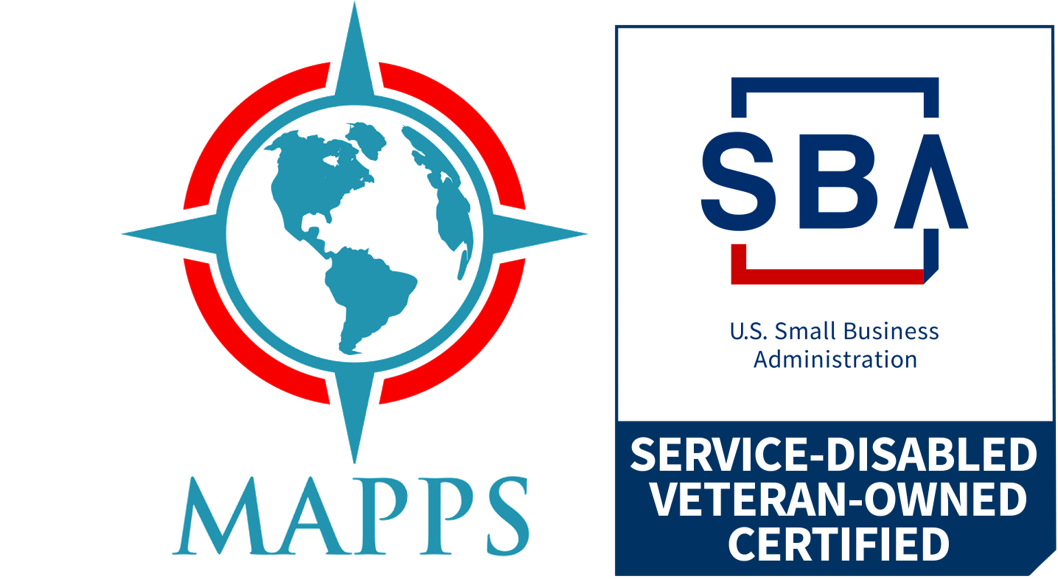Mobile technology has transformed the way we live our lives and has the potential to dramatically assist in demining operations and the eradication of Explosive Remnants of War (ERW); however, commercial off the shelf (COTS) systems coupled with ERW-related applications alone leave capability gaps and creates potential risks that must be closed. A more tailored and deliberate eco-system approach for the employment of mobile technology will yield greater benefits and avoid the problems encountered when Siri, Cortana , Alexis or Goggle Now do not provide the information that we need.
Since 2010, a diverse team of project managers, software developers, system engineers, and testers have supported a US Department of Defense progr am to determine how best to integrate commercial mobile technology into the military. The challenges and successes of the team not only resulted in the adaptation of the capability by over 3,000 Soldiers supporting Operation Enduring Freedom but also identified the key attributes necessary to make mobile technology a viable tool for the demining and ERW eradication communities.
am to determine how best to integrate commercial mobile technology into the military. The challenges and successes of the team not only resulted in the adaptation of the capability by over 3,000 Soldiers supporting Operation Enduring Freedom but also identified the key attributes necessary to make mobile technology a viable tool for the demining and ERW eradication communities.
In our day-to-day lives, mobile technology in the form of smartphones has made an impact of never before seen proportions. A critical component to the success of this technology has been a reliable and robust network that allows devices access to and management by a back-end infrastructure that greatly enhances the usability and functionality of the Smartphones. We frequently see the limitations of the devices themselves when we either venture into an area with no or degraded service or place our devices in Airplane mode. It is only at those times, when we cannot access a map or communicate with others that we fully appreciate how much the reachback capability is an essential component to mobile technology. These limitations could have catastrophic effects when a device is being used to navigate, maintain situational awareness or develop a common operational picture to support a military operation.
Our program identified the need for a full eco-system approach to mobile technology in order to insure uninterrupted support to our mobile users in Afghanistan and although the added security measures necessary to protect information exchanged within the military may not be needed for demining and ERW activities, a 100% reliable system is needed. To that end, the ecosystem provides on board maps (imagery), a customized operating system, an integrated framework that allows applications and functions to seamlessly work together and a user-defined, customized suite of apps tailored to the mission available through the system’s marketplace. An available and trusted network only enhances the capabilities of the ecosystem and is not a dependency of the system.
Focusing specifically on demining and ERW activities, it becomes clear where this approach would enhance the safety, effectiveness and efficiency of any program or operation. We employee small commercial drones equipped with cameras to capture high resolution imagery, up to 0.3mm/pixel), convert it to a mobile friendly format using tiling software and have it available for use on a mobile device in less than five hours. This takes what could be a poorly covered/mapped area and transforms it into a highly accurate, near real time visualized operational area. Couple this imagery with planning software and this area is visually transformed and clearly marked with sweep lanes, restricted areas and any other graphical depictions needed to accomplish the mission. Personnel equipped with devices can also add information, such as mine locations at the touch of a button and use the camera, video and audio recording functions of the smartphone to further capture critical information. Devices are fully customizable to allow the inclusion of libraries and databases of information on mines and other ERW items to allow for easy identification, as well as training and education of personnel.
The scalability of the ecosystem also enhances it functionality. As the ecosystem’s owner, you can provide something as simple as an ordnance ID guide in the form of an app to assist the local population in identifying potential hazards, which can be distributed via provided hardware or uploaded to an individual’s personal device. The next level of capability could add a reporting tool for the found ordnance. Using this approach, what began as a single capability could grow over time as resources and need allows to create and entire demining and ERW eradication planning, execution and reporting tool. Regardless of how basic or advanced the tools you employ, in any case, the result is the same – a safer environment for the area’s residents.
